Travel: GaziAntep-Town of Mosaics and Mosques. Turkey, Oct 15/2022
- Lili Naveh
- Oct 14, 2022
- 6 min read
Updated: Feb 15, 2023
Updated on Feb 6/2023 following the disastrous earthquakes centered in southern Turkey, impacting this visited town and its surroundings.
And another update on Feb 14t/2923 "Death tall surpass 4o,ooo"
The Course of the Trip

Despite the very late arrival at Gazi Antep town, of the previous late night drive from Mt. Nemrut, the day's site-seeing began, early morning, and with a full program for the entire day.... starting with Zeugma Mozaic Museum
Views from Tugcan Hotel
Gazi Antep - “Good Spring”
Situated near the Sacirsuyu River, a tributary of the Euphrates River, in limestone hills north of Aleppo, Syria , this very religious large city is of 2.5 M inhabitants,

Gaziantep - an important station town- was strategically situated near ancient trade routes - the Silk Road . 500km away from Ankara and 60km from Halleb/Aleppo Syria's sea port facilitated trade via water ways and land caravans all the way to China an Rome.
The Chinese called this trade route "the Grand Horses Way". In 2nd BC coveting the horses on the Turmans' lands, which they couldn't get.
The city is of the oldest Hittite settlement, origin, and has been continuously inhabited and witnessed the domination of such powers as the Assyrians, Persians, Romans, the Byzantines, Abbasid and the Seljuk Turks. Its looming main Fortress is a testament to this long historyand. is today a very religious city
The times of ascend for the Ottoman Empire meant the same for the city.
The city is dotted with hundreds of Mosques. and many inns, Hammams/baths and medresse built during this time, as well as hundreds of housing construction projects
old stone houses, paved streets, and lively covered bazaars.

Gaziantep is bordered by gardens, vineyards, and olive groves, and is a center of pistachio nut cultivation, which is one of the important and industrial centers of Turkey.

Early morning visit at the Museum

Zeugma Mozaic Museum

The Camels Caravan installation across the street from the Museum

At the Zeugma Mosaic Museum
This museum contains and is one of the largest most fascinating mosaic museums, in the world.
Opened in 2011 it displays an amazing mosaic collection, which reflects the life, culture, and beliefs of the people living, at that point in time, within the city,
By recreating their environment, using full-scale replicas of a street, fountain, fresco walls, coulombs. and statues, with remarkable foundation of small stones design, color, and work's quality, the spectacular mosaic, unveils the entire tapestry of
a period,, 2000 years old ( 2nd to 4th AD)

A Basalt Stele
Handshake of Commogene King Antiochus I and God Apolo-Mithras Helios, from salvaged excavation of Hellenistic Agora in Ancient Zeugma
Mosaics rescued from several Zeugma villas ( 2nd-3rd AD)
Euphrates The River God Oceanos and Tethys Gaia
Akhiles

Eros and Psych

The most famous piece within the museum is the Gypsy Girl mosaic, Fertility Goddess Demeter, Akratos, Okeanos, Euphrates, Tethys, Perseus-Andromeda, Herakles, Helios, Mars Statue, Dionysos, Telete, Skyros, Ariadne, Eros, Psykhe, Metiochus, Parthenope.

The Gypsy Girl in Zeugma Mosaic Museum.
is the brand mark of the museum
The Gypsy Girl contains amazing preserved mosaics rescued off the site,

Zeugma Site
Ancient Hellenistic eraGreek and then Roman city of Commagene ,
Zeugma is an ancient site of which its archeological treasures, sadly submerged under the waters of the GAP project
Zeugma was founded in the early 3rd BC as the city of Seleucia by Seleucus I Nicator, a Diadochus (successor) to Alexander the Great and Hellenistic Greek founder of the Seleucid Kingdom, on the site, strategically important, where he had the first bridge over the Euphrates built.
In 64 BC, the Roman Republic gained control of the city. Up to 70,000 people lived in the city, and it became a center for the military and commerce for the ancient Romans.]
In 253 AD, it was destroyed by the Sassanids, but was later rebuilt and destroyed again.
Initially the site was excavated sporadically, but in 2000, as the site would be flooded due to construction of the Birecik Dam. with only a fraction of the site excavated, archeologists feared that many mosaics would be permanently lost. After reading about it in The New York Times, and with only few months left, American philanthropist David W. Packard donated USD 5 million to fund an emergency excavation of the archeological site, allowing archeologists to preserve the mosaics that would otherwise be inundated by the dam, and which is now on display at this fabulous museum.
Perseus and Andromeda Hamaam Mosaic Dionysos
Other near- by archeological sites, from where artifacts were on display at the museum

Out of the 2 hours allocated to the visit at the museum , David and I used the remaining 45 free minutes, once done viewing the exhibits, to explore the near-by neighborhood, which was full with utility small shops,
David's getting a hair cut, within this time frame, at the hands of most professional local hairdresser, who accomplished in only 15 minutes, the hair cutting task was David's best used time of the day.

Kunefe &Katmer Kadayf Cafe
A mid morning Tea/Coffe break
at this quaint place, very near to the town's Fort, where our Guide further educated the group, on the charms of
this ancient city.
That afternoon the group was dispatched to explore another Turkish Bazaar
The structures around Gaziantep Kale, near the Market area.
Bodeyari Hani (Inn) Alauddevle Mosque Gumruk Hani (Inn)
Bakircilar Carsisi - Bazaar
A city great historical labyrinthine open air and covered Market with tiny stores and stands of metalworkers, shoemakers, spice hawkers and carpenters, displaying copper and metal worked products , kilims, and various artifacts and souvenirs..
City Fortress

Original builders of Gaziantep Fortress, which dominates the market area, are not known. The fortress was restored by the Byzantines in the 6th c then again in 1481 during the time of Kayitbay, the Egyptian Sultan, and in 1557 during the Ottoman sultan Suleyman the Magnificent.
The fortress was supplemented by watchtowers, mosques and small palaces.
Damaged on Feb 6/2023 Earthquake

It is believed there are galleries and paths leading to the river under the fortress.
The fortress was an important rampart in resistance against the French colonial forces during the War of Liberation in 1921..Excavations/restoration have been taken for years and no entrance into the site aloud, and now it got damaged

2 powerful earthquakes struck Turkey on Monday, collapsing buildings in dozens of cities and killing thousands of people in the south of the country and in northern Syria.

The first quake, of 7.8 magnitude at 4:17 a.m. local time, was felt as far away as Lebanon and Israel., 9 hours later, a second major quake, of 7.5 magnitude, hit on the same fault line, about 60 miles north of the first, according to the U.S.G.S.


Almost 3,000 buildings collapsed across Turkey alone after the initial quake, the main HWY to the south collapsed, as well as bridges, the . ancient aqueduct at Kemerhisar, village, (read the post of Oct 19th/2022)
Over 2600 apparently so far are dead and at least 5,000 people were injured.
More on Turkey's heritage site status following the earthquake {here)
David visit to the Harihi Naip Hamaam (Turkish Bath)
After our guide determined that a visit inside the Alauddevle Mosque isn't worth ours
(or his) time, and the weather had changed whereas the rain swept away the visitors, off the busy Market allies, the touring day was cut short at 4:00pm in the afternoon, and the group was bused back to the hotel.

However David couldn't give-up the opportunity to test the local
Harihi Naip Hamam situated below the Fort, and near the Market area, thus spent the afternoon hours, apart from the group, sweating and cleansing also his tormented soul.
The Historical Naib Bath, structure ,which carries the Ottoman bath tradition to the present day, was built in 1640. It was restored with the support of the EU's GAP Cultural Heritage Conservation and Sustainability Grant Program, and put into service in 2007.
In fact, although it was used until recently, no renovation has been made for 80 years, and now it offers sauna, massage, skin care, gym, vitamin and bar. services,
Short History of the Written Turkish Language Script
Modern Turkish is the descendant of Ottoman Turkish and its predecessor, so-called Old Anatolian Turkish, and was introduced into Anatolia by the Seljuq Turks in the late 11th C.
The old Turks didn’t write, but adopted the Middle East Persian and Arabic written languages, even the grammatical form and incorporated it into the verbal Turkish written in Arabic script
However expressing verbal Turkish in a Arabic script form is incompatible .
Stalin forced the Cyrillic script (Slavonic script)on onto the Turkish speaking territories, in the 1920s when, the USSR did a massive campaign to fight illiteracy and promote education not only in Russia but also in all its “national regions”.
In 1928, as one of Atatürk's Reforms in the early years of the Republic of Turkey, the Ottoman Turkish alphabet was replaced with a Latin alphabet.
So Latin alphabet, was instituted since then., and fought the religious institutes and mosques.
The group Dinner that night, at a local restaurant, was not worth writing about.
By By GaziAntep

To be continued....




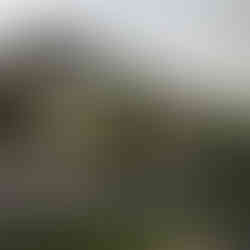

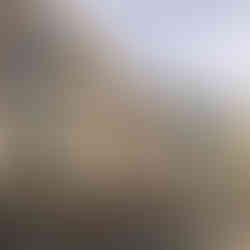













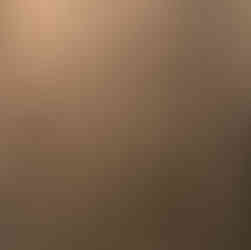


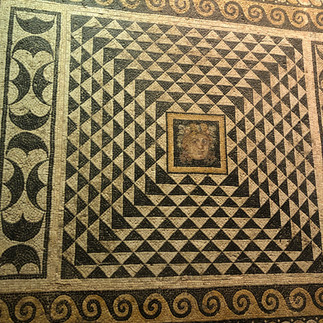





















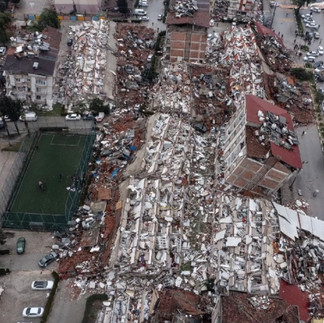

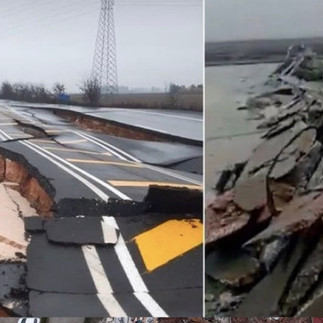



Comments